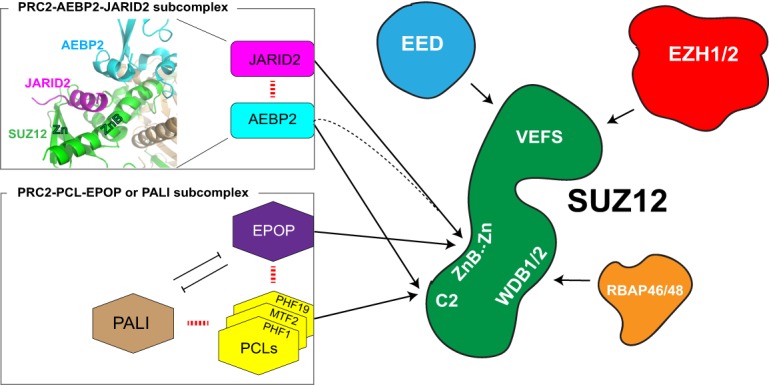Figure 4.

Assembly of core PRC2 and accessory proteins. Schematic representation illustrating the means by which SUZ12 (green) functions as a structural platform. PRC2 subunits and accessory proteins interact with different domains of SUZ12, as indicated (see arrows). (Left) Two major PRC2 subcomplexes are illustrated (square boxes). Interactions and antagonisms among accessory factors are illustrated by dashed red lines and blocked arrows, respectively. (Top left) Structure showing AEBP2 and JARID2 cooperative interaction with SUZ12. AEBP2 and SUZ12 (ZnB and Zn domains) create a groove that fits the TR (transrepression) domain of JARID2 (modified from Protein Data Bank: 5WAI). This three-way junction formed by JARID2, AEBP2, and SUZ12 creates a stable and unique PRC2 subcomplex PRC2–AEBP2–JARID2. Note that AEBP2 interacts with both the C2 and ZnB domains. Although AEBP2 binds to the ZnB domain, it cooperatively interacts with JARID2 (dashed black arrow), while competing with PCLs.
